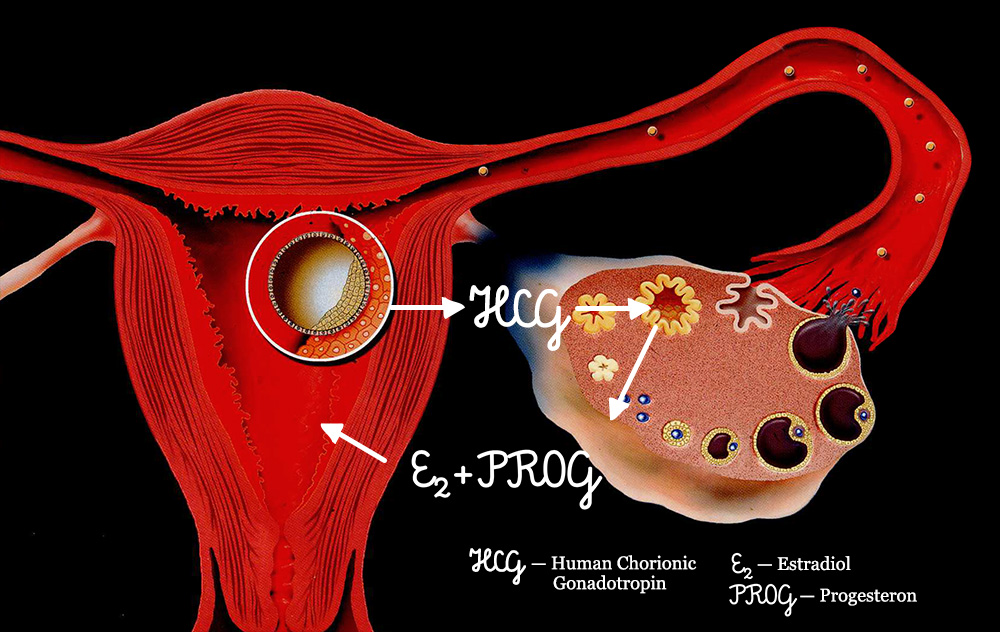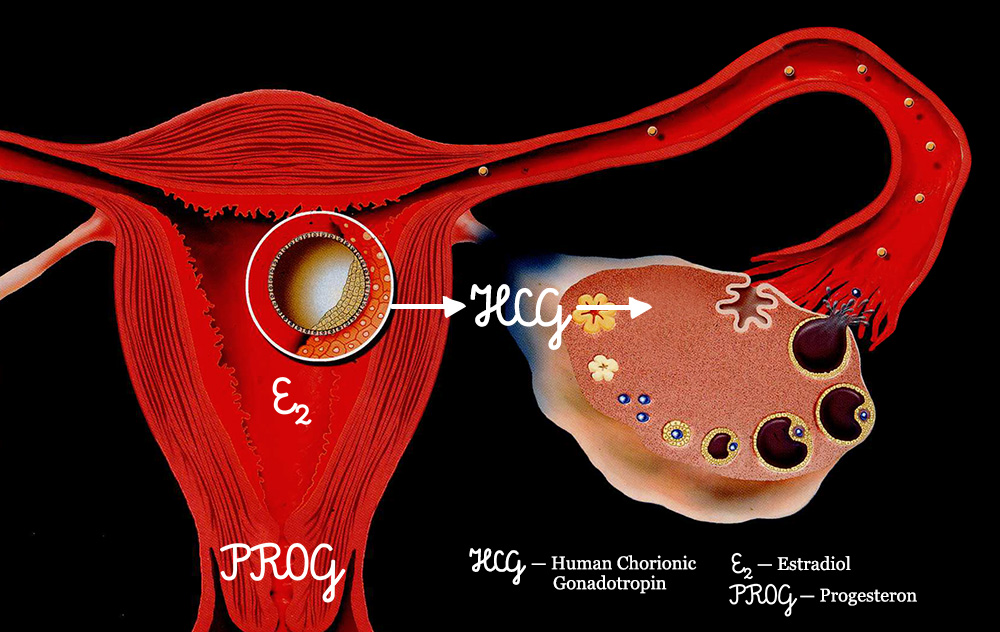What is different?
In pregnancy after egg donation, a pregnant woman does not produce the hormones that are required to support pregnancy until 12 gestational weeks (oestrogens and progesterone). Instead, these hormones enter a woman’s body from outside, as medicines. In a naturally conceived pregnancy, the embryo itself regulates the amount of oestrogens and progesteron produced by the woman’s body. In an egg donation pregnancy, this dialogue is not possible.
When using eggs from a young donor, women of advanced reproductive age have a much lower risk of miscarriage than with their own eggs. However, they have a 4-6% higher risk of pregnancy loss in the first trimester in comparison to women in their mid-twenties. The reason for this is that even if the oestrogens and progesterone that you take to sustain your pregnancy are identical to the natural hormones produced by the body of a pregnant woman, the dialogue between the embryo, ovary and uterus is different.
In a “naturally conceived” or “normal fresh IVF” pregnancy (let us call it “fresh own egg pregnancy”), the embryo produces a hormone called HCG, which stimulates hormone production by the yellow body in the ovary. The yellow body (Corpus Lutheum) is a small structure which appears on the place of a follicle after ovulation or egg collection. In response to HCG stimulation from the embryo, it produces huge amounts of progesterone and oestrogens. As the embryo in the uterus grows bigger, it produces an increasing amount of HCG, which then stimulates the yellow body in an increasing way to produce increasing amounts of progesterone and estradiol which enter the bloodstream. The bloodstream brings these hormones to the uterus, where they work to keep the endometrium in the uterus and the uterus itself relaxed, ensuring the embryo is comfortable inside the uterus. Despite its very small size, the yellow body appears to be a very strong hormone-producing factory. This factory plays a crucial role in maintaining the pregnancy inside the uterus until the 12th week of pregnancy (a full 12 weeks after the first day of menstruation or 10 weeks after the day of egg collection). After 12 weeks of pregnancy, the placenta has grown enough and is ready to take over this function. The yellow body is no longer required and it disappears.
Naturally conceived pregnancy in the first trimester

This dialogue does not occur in a pregnancy achieved through egg donation.
In an egg donation pregnancy, the recipient (would-be mother) did not produce any eggs in the cycle within which the pregnancy was conceived. That means there was no follicle and there will be no yellow body. After an embryo has been transferred to the would-be mother’s uterus, it hopefully implants and starts producing HCG. This the way for the embryo to tell the woman’s ovary “I am here, please give me progesterone and estradiol”. But the ovary does not react, because there is no target for HCG stimulation in it – there is no yellow body. So the woman must ensure that she takes dual hormone therapy until at least the 12th week of pregnancy.
Egg donation pregnancy in the first trimester

This is the reason why, unlike “normal IVF patients”, who discontinue progesterone support soon after their positive pregnancy rnd_test and do not use any oestrogen support at all, you need to take progesterone and estradiol support at least until the 12th week of pregnancy. By this stage, your placenta is ready to provide the support you need, and your pregnancy does not differ from any other naturally conceived pregnancy of the same term. However, I still advise continuing with vaginal progesterone, which makes the cervix longer and stronger, until week 20-24, to prevent late miscarriage.